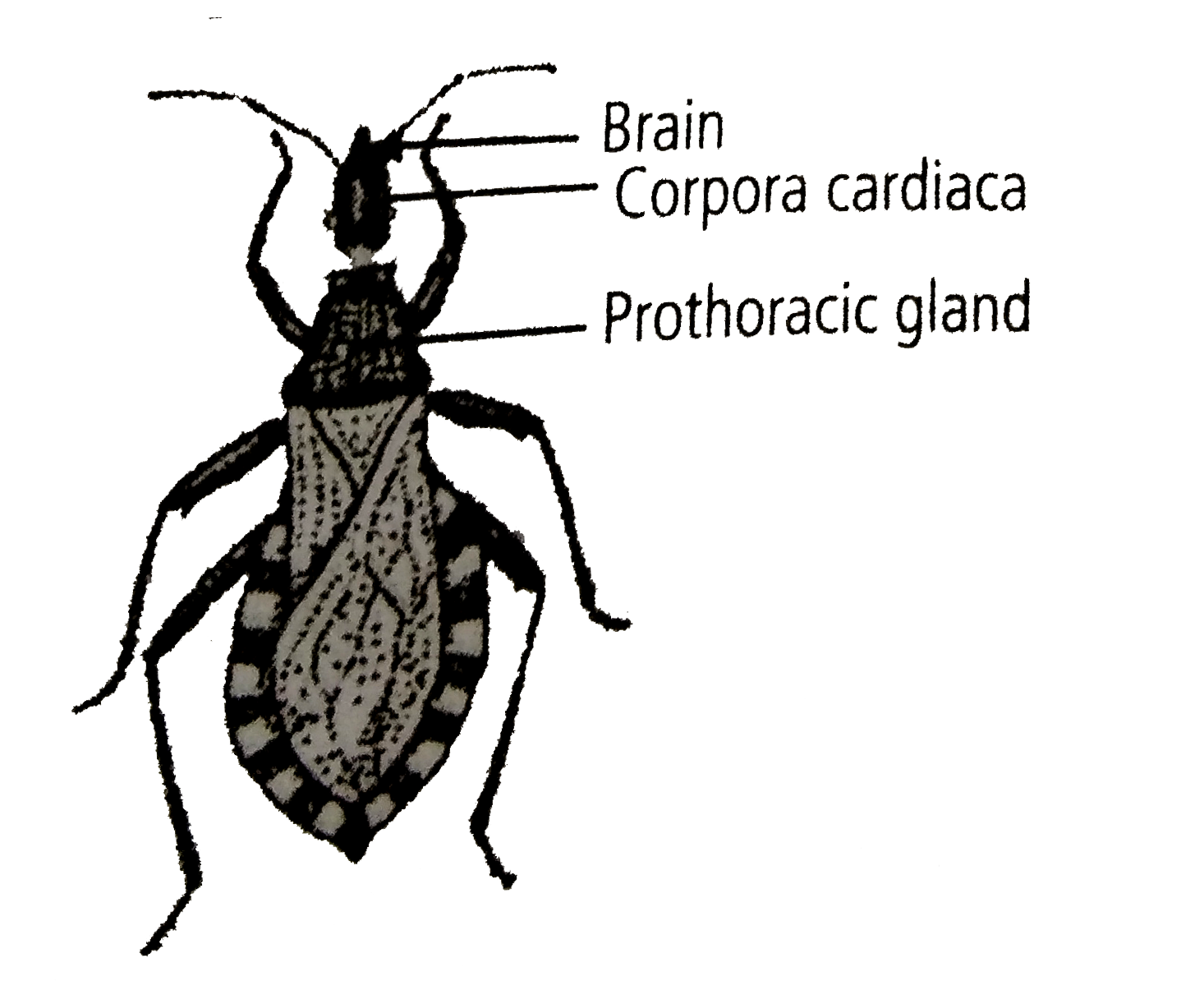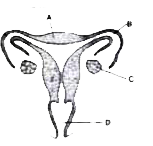During hemdialysis process
I. blood drained from a conveniend artery and anticoagulant is added (heparin).
II. Removal of nitrogenous waste from blood.
III. Blood is passed through a coiled porous cellophane membrane of tube bathing in dialysis fluid.
IV. blood is mixed with antiheparin and passed into vein.
Arrange the steps
I→II→III→IV
IV→III→II→I
I→III→II→IV
I→IV→II→III
The correct Answer is:3
To arrange the steps of the hemodialysis process in the correct order, we can follow these steps:
1. Step 1: Blood is drained from a convenient artery and anticoagulant is added (heparin).
- This is the initial step where blood is collected from the body, and heparin is added to prevent clotting during the process.
2. Step 2: Blood is passed through a coiled porous cellophane membrane of the tube bathing in dialysis fluid.
- In this step, the blood travels through a hemodialyzer, which contains a coiled porous membrane. This membrane allows for the exchange of substances between the blood and the dialysis fluid.
3. Step 3: Removal of nitrogenous waste from blood.
- As the blood flows through the porous membrane, nitrogenous wastes (like urea) are removed from the blood into the dialysis fluid, effectively cleansing the blood.
4. Step 4: Blood is mixed with antiheparin and passed into the vein.
- Finally, the treated blood is mixed with antiheparin to counteract the anticoagulant effect and is then returned to the patient's vein.
Final Order of Steps:
1. Blood drained from a convenient artery and anticoagulant is added (heparin).
2. Blood is passed through a coiled porous cellophane membrane of the tube bathing in dialysis fluid.
3. Removal of nitrogenous waste from blood.
4. Blood is mixed with antiheparin and passed into vein.
- This is the initial step where blood is collected from the body, and heparin is added to prevent clotting during the process.
- In this step, the blood travels through a hemodialyzer, which contains a coiled porous membrane. This membrane allows for the exchange of substances between the blood and the dialysis fluid.
- As the blood flows through the porous membrane, nitrogenous wastes (like urea) are removed from the blood into the dialysis fluid, effectively cleansing the blood.
- Finally, the treated blood is mixed with antiheparin to counteract the anticoagulant effect and is then returned to the patient's vein.
1. Blood drained from a convenient artery and anticoagulant is added (heparin).
2. Blood is passed through a coiled porous cellophane membrane of the tube bathing in dialysis fluid.
3. Removal of nitrogenous waste from blood.
4. Blood is mixed with antiheparin and passed into vein.
Topper's Solved these Questions
- HUMAN PHYSIOLOGY -IBOOK - ALLENCHAPTER - HUMAN PHYSIOLOGY -IEXERCISE - BEGINNERS BOX-21
1 Videos
- HUMAN PHYSIOLOGY -IBOOK - ALLENCHAPTER - HUMAN PHYSIOLOGY -IEXERCISE - BEGINNERS BOX-22
1 Videos
- HUMAN PHYSIOLOGY -IBOOK - ALLENCHAPTER - HUMAN PHYSIOLOGY -IEXERCISE - EXERCISE-III A. NCERT BASED QUESTIONS
17 Videos
- HUMAN HEALTH AND DISEASEBOOK - ALLENCHAPTER - HUMAN HEALTH AND DISEASEEXERCISE - Question
116 Videos
- HUMAN REPRODUCTION BOOK - ALLENCHAPTER - HUMAN REPRODUCTION EXERCISE - Question
92 Videos
Similar Questions
Assertion 'A'. Nitrogenous waste from arterial blood is removed when blood passes through dialyser unit
Reason 'R'. Arterial blood of patient and dialysing liquid are made to flow on two sides of permeable membrane
View SolutionIn the process of hemodialysis, when anti-heparin is being added? ?
(a) After the blood is taken out from an artery
(b) Before the clear blood is pumped back to the body through a vein
(c) Into the body before the blood is taken out for the process
(d) Into the body after the cleared blood in injected into the veins.
View Solution
Knowledge Check
Following is a list of the events (in a random order) that lead to the formation of an auditory impulse.
(i)Vibration is transferred from the malleus to the incus to the stapes.
(ii)Basilar membrane moves up and down.
(iii)Nerve impulse is transmitted in cochlear nerve to auditory cortex of brain for impulse analysis and recognitions.
(iv)Sound waves pass through ear canal.
(v)Stereocilia of hair cells of organ of Corti rub against tectorical membrane.
(vi)Sound waves cause ear drum to vibrate.
(vii)Nerve impulse is generated
(viii)Vibrations move from fluid of vestibular canal to the fluid of tympanic canal.
(ix)Membrane at oval window vibrates.
Which of the following options represents these events in a correct order ?A(iv), (vi), (i), (ix), (viii), (ii), (v), (vii), (iii)B(i), (ii), (iii), (iv), (v), (vi), (vii), (viii), (ix)C(ix), (viii), (vii), (vi), (v), (iv), (iii), (ii), (i)D(iv), (vi), (i), (viii), (ix), (ii), (v), (vii), (iii)Read the given passage and answer the questions that follows: Rhodinus, a blood-sucking bug, shows five instars before it metamorphoses into an adult. It ahs a very long head with the brain located at tip and an organ called Corpora Cardiaca (C C) behind it. The hormone that ensures the continuum of the juvenile stages is called a juvenile hormone. Behind the head is a pro - thoracic gland, which gets triggered by the Pro - Thoracico - Tropic Hormone (PTTH) to release ecdysone required for molting into an adult.

The following observations were made when the juveniles of this insect were subjected to various conditions :
1. Starved juveniles (any instar) when decapitated → remained juveniles and did not molt into adults.
2. Well-fed juveniles (any instar) when decapitated → molted into adults.
3. Starved juveniles (any instar) when partially decapitated to remove the brain cells → remained juveniles and did not molt into adults.
4. Well - fed juveniles (any instar) when partially deitated to remove the brain cells → did not molt into adults.
Which of the following conclusions can be drawn from this data ?
(i) Ecdysone hormone is produced irrespective of the level of feeding.
(ii) C C is the site of production of juvenile hormone.
(iii) PTTH is produced irrespective of the level of feeding.
(iv) Increase in juvenile hormone is an important trigger for production of PTTH.
(v) Absence of C C alone is a trigger for molting into adult form.
(vi) Well-fed larvae in absence of juvenile hotmone can molt into adults.A(i), (iii) (iv) and (v)B(ii), (iv) and (v)C(ii) and (vi)D(i) and (iv)Which of the following statements are correct ?
(i) Ca+2 is necessary for blood coagulation
(ii) Coagulation in blood vessel is prevented during normal condition by heparin
(iii) Clotting of blood involves changes of fibrinogen to fibrin by thrombin
(iv) Blood clotting involves casecading process involving a number of factors present always in the active form.A(i),(iii) and (iv)B(ii) and (iv)C(i),(ii) and (iii)D(iii) and (iv)
Read the following four statements carefully:
I. About 70 ml of blood is pumped out by each Ventricle during a cardiac cycle is called the beat volume.
II. The fluid called lymph is almost similar to blood plasma without any exception
III. Heart failure simply means when the heart stops beating .
IV. Hypotension leads to heart diseases as well as damage to the brain , kidney and other vital organs.
How many from the above is/are correct ?
View SolutionGo through the following statements .
(i) Hypophysial portal vein carries blood from the hypothalamus to the anterior lobe of the pituitary gland.
(ii) The central nervous system lacks lymphatic channels.
(ii) The thoracic duct drains into the left subclavian vein.
(iv) Hepatic portal vein is formed by the union of superior mesenteric vein and splenic vein.
Which of these are correct ?
View SolutionSelect the correct statement from the following .
I. Bones support and protect softer tissue and organs
II. Blood is a fluid connective tissue.
III. Cartilage is a type of specialised muscle tissue.
IV. The bone marrow found in some bones is the site of production of leucocytes.
View Solutionwhich of the following statements about human kidneys are incorrect?
I. The cortex extends in between the medullary pyramids as renal columns called Columns of Bertini.
II. Inside the kidney, there are two zones, an outer cortex and an inner medulla.
III. Towards the centre of the inner convex surface of the kidney is a notch called hilum through which ureter, blood vessels and nerves enter.
IV. Human kidneys extend from the 12th thoracic vertebra to the 5th lumbar vertebra.
(a) I and III
(b) II and IV
(c) III and IV
(d) I and II
View SolutionThe figure given below represents the female reproductive system of a mammal. Parts indicated by the guidelines A to D are as follows:

(A) Uterus
(B) Fallopian tube (oviduct)
(C) Ovary
(D) Vagina
(a) Give appropriate terms for each of the following:
(i) The onset of reproductive phase in a young female.
(ii) Rupture of follicle and release of ovum from the ovary
(iii) Monthly discharge of blood and disintegrated tissues in human female.
(iv) Process of fusion of ovum and sperm.
(v) Fixing of developing zygote on the uterine wall.
(vi) The permanent stoppage of menstruation at about the age of 45 years in a female.
(b) State the functions of the (0) Placenta (ii) Amniotic fluid. [ICSE 2004, 2015]
(c) Using the symbol "X' indicates the region in the diagram where fertilisation occurs.[ICSE 2004)
View Solution
